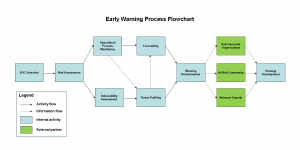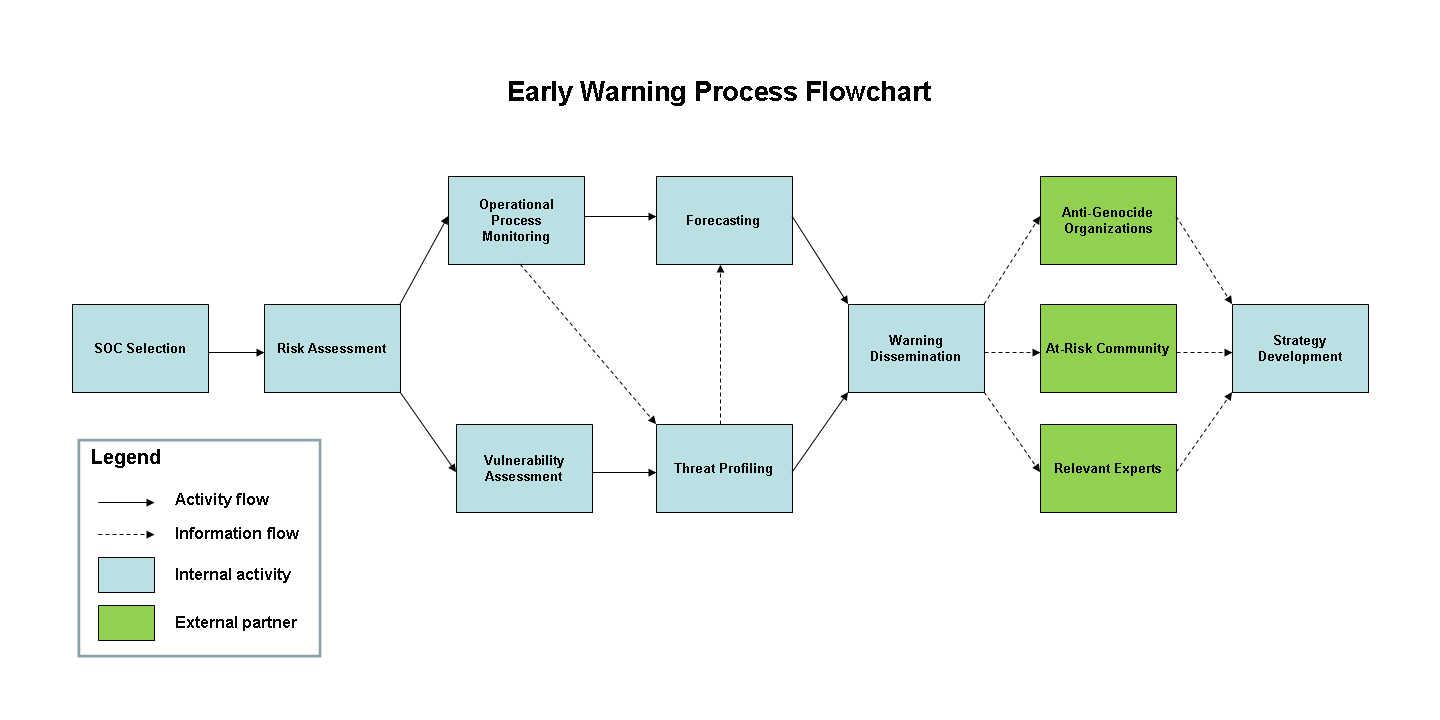Here at the Sentinel Project we recently took a step back and are reorganizing our team in order to overcome some challenges and get closer to accomplishing our mission. A major part of this effort has been to document the framework and process that our Research Team will use to predict genocide and strategize to prevent it. A big milestone will be the completion of our forthcoming Early Warning Manual. When complete, this document will not only spell out exactly how SP works using a structured, repeatable process, but will also be open to the public for constructive feedback and use by other organizations. As a small preview, we are sharing here a flowchart which illustrates how everything fits together.

This flowchart illustrates the process that Sentinel Project analysts follow when identifying and monitoring countries at risk of genocide.
Each of the boxes on this chart represents one of the following, from left to right:
- SOC Selection – A situation-of-concern (SOC) is selected according to standardized criteria so that countries deserving attention receive full risk assessments and monitoring.
- Risk Assessment – Once an SOC has been selected, it is subjected to a full risk assessment according to the 30 risk factors which the Sentinel Project uses to profile conditions that increase the risk of genocide.
- OP Monitoring – Following the risk assessment, analysts begin to closely and actively monitor events happening in the SOC on an ongoing basis. They do this by acquiring many different information sources. The goal here is to recognize whether the genocidal process is underway and how it might escalate.
- Forecasting – Building on the information gathered while OP monitoring, forecasting produces short-term predictions about events and trends which can be used to warn at-risk communities.
- Vulnerability Assessment – In parallel with OP monitoring and forecasting, a vulnerability assessment will be conducted in order to identify the sources of weakness for at-risk communities and determine how capable they are of coping with genocide if it occurs. Measures can then be taken to strengthen these groups and increase their chances of survival.
- Threat Profiling – This activity is focused on understanding the characteristics of potential perpetrators and how they are likely to behave in a given situation, which can inform more effective response strategies.
- Warning Dissemination – Each of the previous stages feed into the dissemination of warnings on an annual, quarterly, or monthly basis, depending on the audience and the type of information.
- External Partners – These are the audiences for the warnings we disseminate and include the at-risk community first and foremost as well as subject matter experts and other anti-genocide organizations.
- Strategy Development – Together with our external partners, we will come together and develop prevention and mitigation strategies based on all of the information gathered so far.

